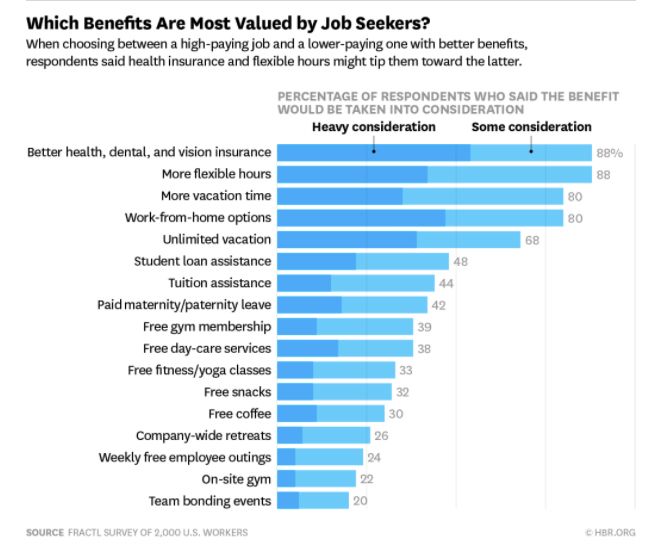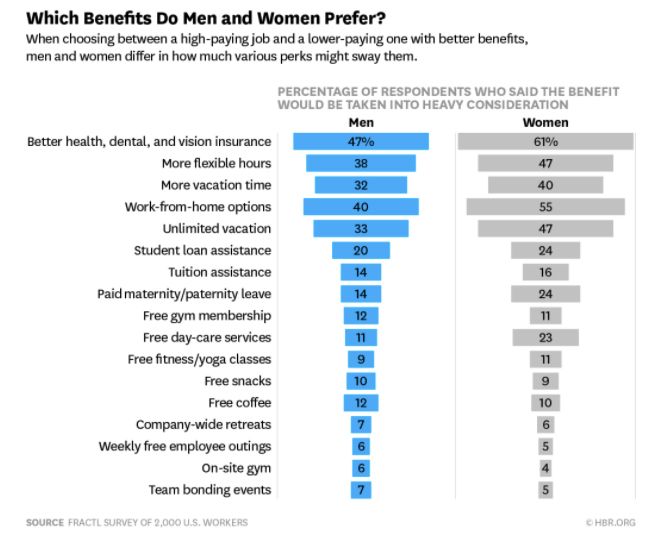Stay connected
Subscribe to our Inside WEX blog and follow us on social media for the insider view on everything WEX, from payments innovation to what it means to be a WEXer.

Prior to the 1930s in the US, Americans paid for their own healthcare. Individuals did not have health insurance, in part because medical care was not very far advanced and was therefore not as costly or as valuable. In some cases, health care and employment were linked, but for the most part, this relationship was limited to industries where workers had the potential to be injured while on the job. People working in dangerous professions like mining, steelwork, and railway construction were given access to company doctors in industrial clinics or union-operated infirmaries. While this was not healthcare as it exists today, these company-sponsored clinics were an early example of how businesses might be involved in their employees’ well-being.
Health insurance companies grew significantly in the early 1930s, in part because during the Great Depression people could not afford medical care, and hospitals needed to find new ways to get patients in the door. When Franklin Delano Roosevelt was elected in 1932, one of his main goals was to pass the Social Security Act. He considered including Universal Health Coverage as part of that bill but pressure from the medical lobby (the American Medical Association) convinced him that both would be doomed for failure if he attached health coverage to social security. Instead, companies like Blue Cross and Blue Shield were born at this time and became prominent providers of American health coverage plans.
The shift in norms from individuals purchasing health insurance to employers providing it was one of the countless changes in American society caused by the Second World War. In 1942, as a result of rising concern about inflation, congress passed the Stabilization Act, which limited employers’ ability to provide their workers with raises. Because America was in the midst of fighting a world war, the US workforce was depleted and companies were challenged to hire enough people to keep their operations running. The government-imposed limit on raising wages to entice employees hampered companies’ ability to attract new talent. Employee-based health insurance became a key bargaining chip to lure employees. Companies began to offer health insurance as a benefit to drive retention and application rates. Because those benefits were part of compensation but did not count as income, employees did not have to pay taxes on those dollars spent by their employer on their health coverage.
Between the 1950s and 1980s in the US, unions across the country pressured companies to strengthen workers’ health coverage. Many companies expanded coverage to include vision and dental insurance. The relationship between employment and health insurance drew questions about how people would be protected once they retired. In 1965, Lyndon B. Johnson introduced Medicare and Medicaid, government programs to protect retirees.
In the 1960s and 70s, there was much discussion about the need for an overhaul of our healthcare system, and in 1971 Senator Edward Kennedy proposed a single-payer plan that would insure every American. Nixon was president at the time and had his own ideas about how to expand health coverage to more Americans. Kennedy urged fellow lawmakers to block Nixon’s plan and hold out for the next administration to bring a better plan to the table. Nixon’s plan was derailed as Watergate became his primary focus. In the next election year, Kennedy was defeated by Jimmy Carter in the Democratic primary, further pushing his healthcare plan into the background. It would later be his greatest regret that he did not do more to fix the nation’s healthcare inequities.
During Bill Clinton’s presidency in the 1990s, nationalized healthcare became a topic of debate once again, with Hillary Clinton leading the charge. In 1993, her plan, the Health Security Act, died in Congress, with opposition from Republicans who claimed the bill was too complicated, and from a portion of the Democratic party, who argued it was too moderate. During the ‘90s and early 2000s, health maintenance organizations (HMOs) came into being. HMOs have their own network of doctors, hospitals, and other healthcare providers who all agree to accept payment at a certain level for any services provided.
In 2010, President Barack Obama signed the Affordable Care Act, a major step towards universal health coverage in the United States. This program provided individuals with health coverage that was once again separate from employment.
There was concern in some circles that with the advent of government-facilitated affordable care there would be less impetus for people to find employment because it would no longer be the only means for individuals to affordably insure themselves. In the end, this did not prove true. A study by the University of Pennsylvania’s Leonard Davis Institute of Health Economics found that the ACA had minimal effect on employment, hours of work, and compensation.
With the rise of independent options for health coverage in the US, separate from employee benefits, evolving how we look at benefits and how we innovate when developing employee benefits is a worthy exercise. When planning the future of employee benefits for your company, looking beyond health coverage for ways to complement it with the other benefits you offer will be a differentiator for you for the recruitment you do in the years to come.
According to a recent Glassdoor Employment Confidence Survey, about 60% of people report that benefits and perks are a major factor in considering whether to accept a job offer. The survey also found that 80% of employees would choose additional benefits over a pay raise. Providing the right benefits to engage employees and retain them will give you a competitive edge when competing for talent.
One of the most important findings by a recent study performed by the Healthcare Trends Institute was that the quality of an employer’s benefits directly correlates with an employer’s ability to retain and recruit employees. What benefits you offer impact your company’s brand and overall perception by the public as well.
In a recent employee benefits survey, the Society for Human Resources Management (SHRM) reported that 92% of employees felt that benefits were important to their overall job satisfaction. At the same time, almost a third of those responding said that the quality of their current benefits package was a reason to look for a new position with another company within the year.
Employers are faced with daily challenges to keep employees retained and engaged at work. It is important to track benefits offerings as they evolve as well as what types of plans are most effective in meeting employee demands.
Quality benefits are a critical part of winning the competition for talent. Companies that offer the best benefits will win the most talented and promising employees every time. In a recent survey of HR professionals, 68 percent agreed that good benefits are key to improving morale and satisfaction and more than three-quarters (75.4%) agreed that a good benefits package helps to retain and recruit employees.
While respondents from that same study often differed in benefits strategy execution, one statement rang true whether the survey-taker was from a company of 20 or from a company of 20,000: “The quality of a benefits package impacts the reputation of my company.”
According to the study, 67 percent of leaders selected seven or higher on a ten-point scale regarding their accord with the above statement, while nearly a quarter of respondents selected ten out of ten.
Job-seeking individuals value the reputation of the companies from which they seek employment, and are more likely to accept a job offer from a well-regarded institution than they are from a company perceived as indifferent to employee well-being. What a company offers for benefits reflects how they care for the people they employ. A good benefits package communicates respect for and gratitude towards a workforce and helps shape a positive reputation for your company. An investment in benefits is a surefire way for any company to shore up its reputation as a good place to work.
To compete, it helps to know what workers are expecting. Offering competitive benefits allows your company the ability to compete for the best talent in the marketplace.
Companies like Google and Twitter blow everyone else out of the water with the perks they offer their employees. Lunches made by a professional chef, biweekly chair massages, yoga classes, haircuts, catered meals all day, on-site acupuncture, and improv classes are on offer at many of the giant tech companies where competitive hiring increases the stature and stability of the operation. Some companies have college scholarship programs for the children of employees, and some have vacation expense reimbursement. These perks might not be realistic for smaller companies, but there’s a lot you can do to attract talent that’s manageable and doesn’t break the bank.
A new survey conducted by Fractl found that “after health insurance, employees place the highest value on benefits that are relatively low-cost to employers, such as flexible hours, more paid vacation time, and work-from-home options.” They found that benefits offered by some companies won over recruits, beating out higher paying offers from other companies. What benefits you’re offering can matter more than salary. The trick is to find those niche, low-hanging fruit benefits that are affordable, and implement them into your strategic plan.

FRACTL Survey: Which Benefits are Most Valued by Job Seekers

FRACTL Survey: Which Benefits are Preferred Based on Gender
When people pursue working for a company full-time, there are certain expectations for what they will receive as part of their benefits package. After a good health, vision, and dental package, people are also seeking a better work-life balance. They want flexibility in their work hours and some measure of control over where they do their work. Top priorities today’s employees are looking for:
Additionally, the following perks ranked high with those surveyed, though not as high as the first three items mentioned above:
For your company to stay competitive it’s important to stay aware of what other companies are offering and raise the bar to compete. Offering a strong health/vision/dental package is your first step to beating the competition. The second is to look at ways to offer employees the flexibility to work when and where they want. These types of benefits cost you nothing and bear significant fruit with retention and engagement. The result of offering flexibility, more vacation time, and the option to work remotely is a more engaged and ultimately more productive employee base who will not leave you for a higher paying job offer.
Student loan and tuition assistance are a relatively high priority for people looking at more than one job offer and trying to decide which company to choose. If your company can offer some type of tuition or loan assistance program, you’ll have one more treat in your bag of tricks to offer at the negotiating table.
The benefits that had the least sway for recruits were things that didn’t directly impact their lifestyle or finances. Company outings, snacks and coffee in the office, and team-bonding activities were low on the list for employees trying to decide where to land for their next job. These can be expensive for a company, and while they are appealing to employees, it might make more sense to point resources towards the benefits that employees are saying matter to them more.
During COVID, for companies who want to stay competitive with their benefits package, simply enacting work-from-home protocols is not enough to keep employees safe and fulfilled. Consider implementing the following COVID-specific benefits if you haven’t already:
As pandemic restrictions lift, remote work may stick around. If working remotely becomes a more widely used competitive offering post-COVID, it will be important for companies to adapt their benefits package to respond to that change.
The world of human resources/human capital has changed because of the pandemic, and even if the employee benefits models of today no longer emulate those of years past, the ability of a company to offer high-quality benefits remains pivotal to the company’s long term recruitment, retention, and overall reputation.
There are many ways companies can invest in their employees for engagement and retention. Staying ahead of trends and focusing on the complementary benefits that surround your healthcare package will provide you with an edge for recruiting and keeping the most talented employees for your company.
To discover the ways we simplify benefits for everyone, visit the WEX Benefits Platform.
To learn more about WEX, a growing and global organization, please visit wexinc.com.
Editorial note: This article was originally published on March 8, 2021, and has been updated for this publication.
Resources:
The University of Pennsylvania, Leonard Davis Institute of Health Economics
JP Griffin Group
Harvard Business Review
Forbes
Clinton Presidential Libraries
Humana
WBUR
Subscribe to our Inside WEX blog and follow us on social media for the insider view on everything WEX, from payments innovation to what it means to be a WEXer.